 Hello friends. I am not a doctor, or holistic expert, or certified in any alternative healing practice. But I am a person who lives with a chronic inflammatory disease…Crohn’s disease. I have been on a loooong healing journey and this journey has lead me down many roads of diets, herbs, oils, teas, and whatever else you could possibly think of, I’ve tried over these last 12 years. Most recently I’ve made a breakthrough connection between my Crohn’s flares and stress that has provided me with an enormous amount of power and control over my health…and I hope to share this with you very soon. But for now, I want to share a little bit about turmeric and how I’ve been using it in my healing regimen. A few months ago my sweet beautiful friend Julia showed me a turmeric tincture she made and was raving about. I told her I have turmeric capsules that I use once in a while for inflammation, but didn’t feel a big difference. I tried her tincture and loved it. So I made myself a batch. I have to say, I feel the difference and the tincture feels more powerful than the capsules (for some reason). I don’t know, maybe it’s just placebo, but I can tell it decreases intestinal inflammation..and decreases pain. Here is an excellent article about turmeric with research to back up health claims. But please also read about turmeric’s side effects here. Continue reading
Hello friends. I am not a doctor, or holistic expert, or certified in any alternative healing practice. But I am a person who lives with a chronic inflammatory disease…Crohn’s disease. I have been on a loooong healing journey and this journey has lead me down many roads of diets, herbs, oils, teas, and whatever else you could possibly think of, I’ve tried over these last 12 years. Most recently I’ve made a breakthrough connection between my Crohn’s flares and stress that has provided me with an enormous amount of power and control over my health…and I hope to share this with you very soon. But for now, I want to share a little bit about turmeric and how I’ve been using it in my healing regimen. A few months ago my sweet beautiful friend Julia showed me a turmeric tincture she made and was raving about. I told her I have turmeric capsules that I use once in a while for inflammation, but didn’t feel a big difference. I tried her tincture and loved it. So I made myself a batch. I have to say, I feel the difference and the tincture feels more powerful than the capsules (for some reason). I don’t know, maybe it’s just placebo, but I can tell it decreases intestinal inflammation..and decreases pain. Here is an excellent article about turmeric with research to back up health claims. But please also read about turmeric’s side effects here. Continue reading
Category Archives: Holistic healing
Anti-Inflammatory Turmeric Tincture
Labels: Anti-Inflammatory, better digestion tips, Holistic healing, homemade remedies, IBD Remedies.
Leave a Reply





Shea & Mango Butter Lotion (with video)
Hello friends. I’m super excited to share an amazing new lotion ingredient with you: mango butter! I am in love. Mango butter is a soft, non-greasy butter extracted from the mango kernel (not the meat) and it has a soft earthy scent. Here are just some of mango butter’s benefits: (1) it is rich in powerful antioxidants, vitamins (A, C, & E) and minerals that help reduce degeneration of skins cells (aka, fights wrinkles), improves elasticity of the skin, and offers protection again the sun’s UV radiation, (2) powerful anti-inflammatory agent, good for bug bites, rashes, wounds, scars, and poison ivy/oak, (3) beneficial for the scalp and hair, and (4) excellent for eczema, dry skin, and other skin conditions. Continue reading
Labels: Holistic healing, homemade beauty products, homemade remedies, how to.
Leave a Reply





Shea Cocoa Avocado Oil Body Butter (with an Anti-Itch Recipe)
*Anti-bacterial
3. Cocoa and Shea Body Butter with Jojoba and Vanilla
_____________________________________
Shared on: Raw Foods Thursday, Wellness Weekend, Whole Food Fridays, Healthy Vegan Fridays, Allergy-Free Wednesdays,





Why Taking Care of Your Mental Health is an Important Part of The Healing Journey: My Personal Thoughts and Helpful Resources
1. Deep breathing (a underestimated first defense in calming down)
2. Laughing. I love watching comedies and in general, anything funny. I like to nurture my sense of humor.
3. Wait – don’t react right away
4. Talking with my husband or a trusted friend
5. Being in nature
6. Hugging and cuddling my children
7. Keeping a clean, uncluttered home and keeping things well organized and easy to find
8. Making sure my to-do list doesn’t get too long.
9. Playing guitar
10. Keeping a one-sentence journal
11. Getting shit DONE! I don’t procrastinate.
12. Gardening
13. Letting it go
14. Dancing
15. Cooking and blogging. Blogging allows me to connect with others about food and health
16. Being a total goof ball (I’m not a very serious person, so this comes easy)
17. Yoga
18. Being alone, taking time for myself
19. Reading self-help books or other uplifting books
20. Asking for help
21. Visualization. I do have a happy place. I have calming balancing images that bring me back to the present.





Herbs That Help Fight Stress & Increase Mental Clarity
Please read my disclaimer before continuing on. Thank you
I think we all know stress is super bad for our bodies. And stress can come in many forms: overworked, depressed, constantly angry, troubled by past traumas/memories, anxious about a new chapter in life or transition, money, etc. When I’m anxious, angry, sad, overworked (physically/mentally), I strive to find my balance back to a state of calm and control – calm and control AMID the stresses of life, they aren’t going anywhere, so we need to learn how to cope. This is where behavioral interventions are key and can significantly help reduce the affects of stress on our bodies. Behavioral techniques coupled with herbs can help us retrieve balance. Because come on, LIFE is stressful, love is stressful, having kids is stressful, family is stressful, missing the turn is stressful, waiting in line is stressful, waiting in line with kids is ridiculously stressful. Let’s get the stress under control so we can enjoy the many awesome things that life has to offer.
And look less like this:
And more like this:
Herbs to Help Fight Stress and Increase Mental Clarity:
Vitamin B Complex
Considered a mild sedative and can help promote sleep. Passion flower also treats anxiety, insomnia, depression, and nervousness. The parts of the passion flower plant that grows above ground can be dried and steeped for tea. Otherwise, passion flower is available as a tincture, capsule, and even as a juice. Please use this herb with caution – many known side effects.
Attention and Focus Herb Blend
Bach’s Rescue Remedy
*
More pictures of people looking stressed (that I thought were funny):
(or maybe she’s super hungry?)
Pictures of people being meditative and calm (which I thought you might appreciate after seeing that woman eat her computer):
peace
where there is no noise, trouble or
hard work. it means to be in the midst
of those things and still be calm in your heart.
–unknown
__________________________________________
Shared on: Fat Tuesday, Allergy-Free Wednesdays





Herbs and Supplements to Relieve Common Discomfort During Menses
While there are no hard statistics, it is estimated that as many as 75 percent of all women experience some premenstrual symptoms at one time or another. Symptoms can include any or all of the following: abdominal bloating, acne, anxiety, backache, breast swelling and tenderness, cramps, depression, fainting spells, fatigue, food cravings, headaches, insomnia, joint pain, nervousness, skin eruptions, water retention, personality changes such as drastic mood swings, outbursts of anger, violence, and sometimes, event thoughts of suicide.
What a list of symptoms, right. Blah. Obviously the magnitude of these symptoms varies greatly for each woman. So please consult a physician if you struggle with severe physical or emotional symptoms. The dosages recommended below are for adults. For girls between the ages of 12 and 17, reduce the dose to 3/4 of the recommended amount. Content Source
Please read my disclaimer before continuing on. Thank you.
Suggested Herbs
Used to calm and relieve pain associated with menstrual cramps, also may aid in the emotional/mental strains of menses.
Dandelion Leaf
Relief from bloating.
An excellent diuretic.
Strawberry Leaf
Can help with mood swings and tone the nervous system.
Milk Thistle
Cleanses the liver and helps improve liver function, thus enhancing the liver’s ability to metabolize estrogen. For best results, this herb should be taken on a daily basis for a period of three months.
Nutrients
Probiotics with acidophilus
(use as directed on label)
Breaks down metabolites of estrogen.
Magnesium
1,000 mg daily.
Should be taken with calcium (1,500 mg daily).
Also take with vitamin D, which is needed for the uptake of calcium and magnesium.
Studies show that calcium supplements can reduce many symptoms of PMS by as much as 30% – use a citrate or chelate form.
It’s often cited that women crave chocolate during their periods. Well, there could be a reason. Chocolate is very high in magnesium.
Gamma-amino-butyric acid (GABA)
(750 mg daily)
Assists in controlling anxiety and restlessness by increasing levels of serotonin in the brain.
Recommendations
Content Source
1. Eat fewer dairy products. Dairy products block the absorption of magnesium and increase its urinary excretion. Refined sugars also increase magnesium excretion.
2. Avoid caffeine and xanthine-containing foods and beverages such as coffee, cola, tea, and chocolate. Caffeine is linked to breast tenderness, and is a central nervous system stimulant. Studies have shown that women who regularly consume caffeine are four times more likely than others to have severe PMS.
3. Get regular exercise. Walking, even if only one-half to one mile per day, can be very helpful. Exercise increases the oxygen level in the blood, which helps in nutrient absorption and efficient elimination of toxins from the body. It also helps to keep hormone levels more stable.
4. Wild yam extract contains natural progesterone and has proved effective in alleviating many symptoms of PMS including cramps, headache, mood swings, depression, irritability, and insomnia.
Shared on: Fat Tuesday





Child Friendly Herbs and Holistic Healing for the Common Cold Virus
(my favorite, go-to books)
An Encyclopedia of Natural Healing for Children and Infants
-Mary Bove, N.D.Gentle Healing or Baby and Child
-Andrea Candee and David Andrusia
Herbal Remedies for Children’s Health
-Rosemany Gladstar
Prescription for Nutritional Healing (5th ed.)
-Phyllis A. Balch, CNC
*Information found in this post was derived from different sections in the three first books.
Coupon for Swanson’s vitamins





Holistic Healing for Crohn’s Disease
Crohn’s disease (CD) is an inflammatory bowel disorder of unknown origin. Also called ileitis or enteritis, it usually affects the lowest portion of the small intestine, but it can occur in other parts of the digestive tract from the mouth to the anus. Crohn’s causes inflammation that extends deep into the lining of the intestinal wall, frequently causing significant abdominal pain, diarrhea, rectal bleeding, loss of appetite, and weight loss.
(Below I’ve provided links to the products I use or have used.
I don’t purchase any of these products online,as I’m able to find them locally at my Natural Foods Coop).
Probiotics this one or this one (use as directed on label)Benefits: Aids in digestion. Use a nondairy formula. And a product containing both L. acidophilus and L. bifidus is best.
Please review and study each herb carefully before taking and be mindful of side effects. Never take herbs while pregnant or breastfeeding, unless directed by your holistic healer or medical practitioner!
(click on each herb for more information)
(do not use any other form)
~Information About Diet and Prescription Medication for Crohn’s Disease~
_________________________________________________________________
Thank you for joining me today for day 2 of our Herbs and Spices Summer Series!
Shared on: Traditional Tuesdays, Gluten Free Wednesdays,





Welcome to the Herbs and Spices Summer Series – Post Schedule
(Laura)
(Amber)
(Tessa)
(Amber)
(Laura)
(Vicky)
(Amber)
(Laura)
(Laura)
(Laura)
(Vicky)





Cocoa and Shea Body Butter for Dry Skin and Eczema
Ingredients:
-2.5 ounces Raw organic cocoa butter
-3.5 ounces Raw organic unrefined shea butter
-3 tablespoons organic apricot oil
-1 teaspoon teaspoon vanilla extract (optional, adds scent)
-1/2 teaspoon vegetable glycerine
How To:
1. Weigh out the butters.
2. Shave the cocoa butter and add it to a glass Pyrex submerged in water and bring the water to a boil. This will melt the cocoa butter while keeping it raw. This step is optional, you could also just shave it and add it to the food processor. The heat from blending will melt it pretty well.
3. Add the shea butter to food processor, pulse few times to loosen up and warm the butter – it will become very smooth.
4. Slowly drizzle in the coco butter, apricot oil vanilla, and vegetable glycerin.
5. Blend until velvety and creamy.
6. Transfer lotion mixture to glass jars. The lotion will be soft and will harden as it cools. It will last for MONTHS at room temp. Yields about 12 ounces.





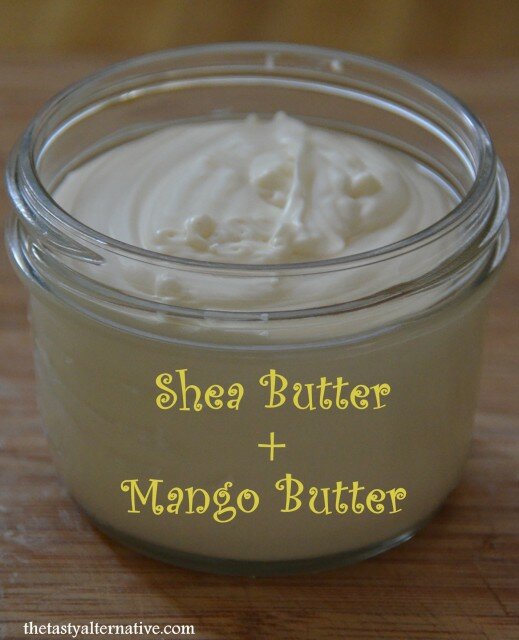












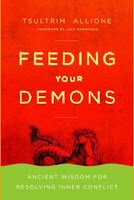

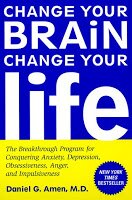
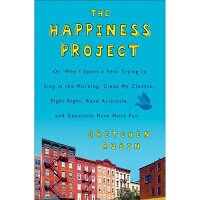
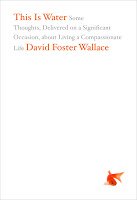




















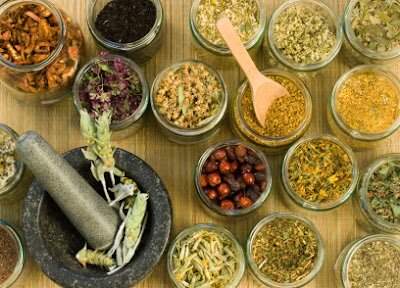
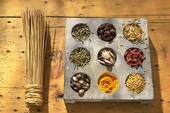
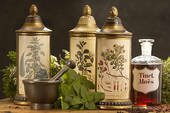
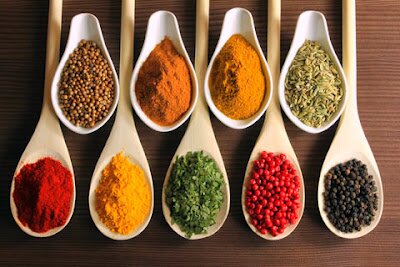








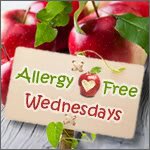



Wow that’s a powerful one. We love turmeric in our home. I need to get some more because we’re all out. Hope all is well Amber. xo
Thanks Emily! It’s great stuff. 🙂
I’d love to try this but swap ginger & black pepper essential oils. Have you heard about using unradiated Turmeric /Curcumin? Or do you check to make sure what you’re taking isn’t radiated?
Thanks for the information. 🙂
I love turmeric. I have often wondered the best way to take it: fresh, dried, or in capsules. I wonder what the strength of the different types are? And how much you have to take of each to be medicinal? I have yet to find to info. I don’t notice much differamce with the 1000mg capsules.
Hey Tessa. I share your curiosity! I didn’t find much help with the capsules either! But I’ve been doing really well with my tincture. Maybe it’s the added Omega 3 from the walnut oil, or the pepper to help boost the turmeric? Not sure. What are you using it for?
This is neat! My mom makes something similar for her digestion, but she adds lemon juice to it, and no oil. I always keep turmeric in mind for its help with depression, so I will have to try this! Hope you are doing well lovely Amber, I miss you girl! xo
Hey Lauren! How are you girl? Miss you too. I need to pop over to your blog. It has been too long!!
The tincture is working really well for me. I’ve been off my meds for several weeks and going strong. 🙂
Hope you’re having a great December so far. Hugs to you. xoxo.
I don’t think I’ve ever used turmeric in anything other than curry. It seems like quite the powerhouse spice, though!
It’s amazing!